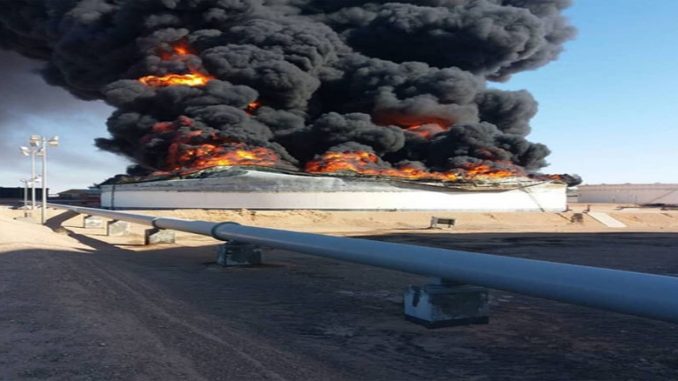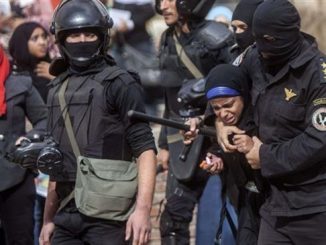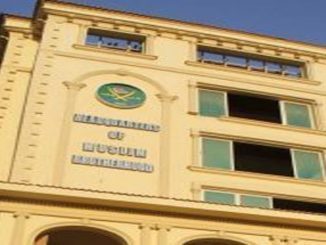
After a week of fighting, forces loyal to Khalifa Haftar say they have retaken As Sidra oil port and and airstrip at Ras Lanuf
Local witnesses and military sources said forces loyal to eastern commander Khalifa Haftar had retaken oil storage tanks and Ras Lanuf airstrip, and that As Sidra port was under military control as clashes continued and troops advanced west.
Libya’s oil facilities are of fundamental importance to the struggling Libyan economy which relies heavily on oil. Production was at 1.6 million barrels per day under former leader Muammar Gaddafi, dropping by about 20 percent after he was ousted in 2011.
After recovering to around one million barrels per day last year, that figure has dropped to 450,000 barrels per day this week with the clashes causing “catastrophic damage”, according to the National Oil Corporation [NOC].
Riccardo Fabiani, geopolitical analyst at Energy Aspects, told Middle East Eye on Thursday that Libya’s oil output may be reduced by up to 40 percent as a result of the fighting.
“The ball is now in the NOC’s court to carry out emergency repair work and resume production as quickly as possible, but some of the damages will probably take weeks if not months to be addressed,” Fabiani said.
“This will inevitably have a negative impact on Libya’s economy, as its fiscal revenues and foreign reserves are impacted.”
The head of the NOC said on Thursday that he hoped operations would resume in “a couple of days”.
The latest clashes began last Thursday when armed groups led by militia leader Ibrahim Jadhran attacked two northeastern oil facilities controlled by Haftar’s self-styled Libyan National Army.
Jadhran’s Petroleum Facilities Guard controlled the oil terminals for years after Gaddafi’s fall – but they were eventually forced out by the LNA in September 2016.
In a video posted last week on social media, 35-year-old Jadhran – a member of the Al-Magharba tribe, largely based in the oil crescent – said he had formed a new alliance to take control of the crude corridor.
The flare-up comes just weeks after rival Libyan leaders sparked hope of progress for their conflict-wracked nation by agreeing during a French-led summit in Paris to hold nationwide elections in December.
The deal struck by four key powerbrokers – including Haftar and the head of an internationally backed government in Tripoli – was in line with a United Nations plan to stabilise the country.
But scepticism was high from the start and experts say the latest clashes underscore how little the political push has impacted the situation on the ground.
Federica Saini Fasanotti, of the Washington-based Brookings Institute, said there are “two different realities” when it comes to Libya.
“One is made by international agreement, conferences… and many, too many, words in the sky,” she said.
“The other one is made by simple facts on the ground.”
Despite his absence from the battlefield since 2016, Jadhran “never gave up”, said analyst Fasanotti.
“The stakes are too high because they mean the control of Cyrenaica and its oil,” she said, referring to Libya’s eastern half.
East Libyan forces said on Thursday they had retaken the shuttered oil ports of Es Sider and Ras Lanuf, where the head of Libya’s National Oil Corporation (NOC) said he hoped operations would resume in a “couple of days”.



